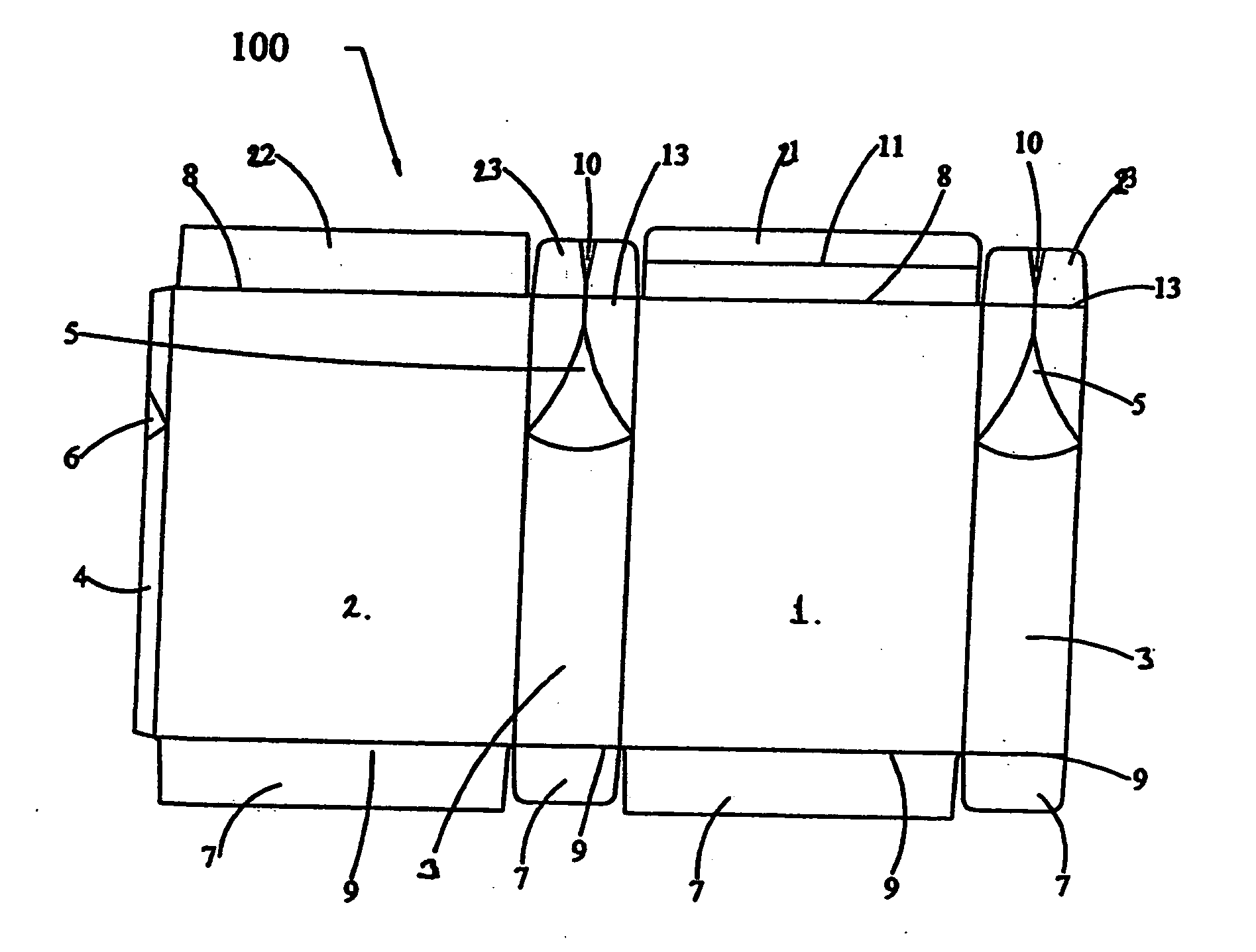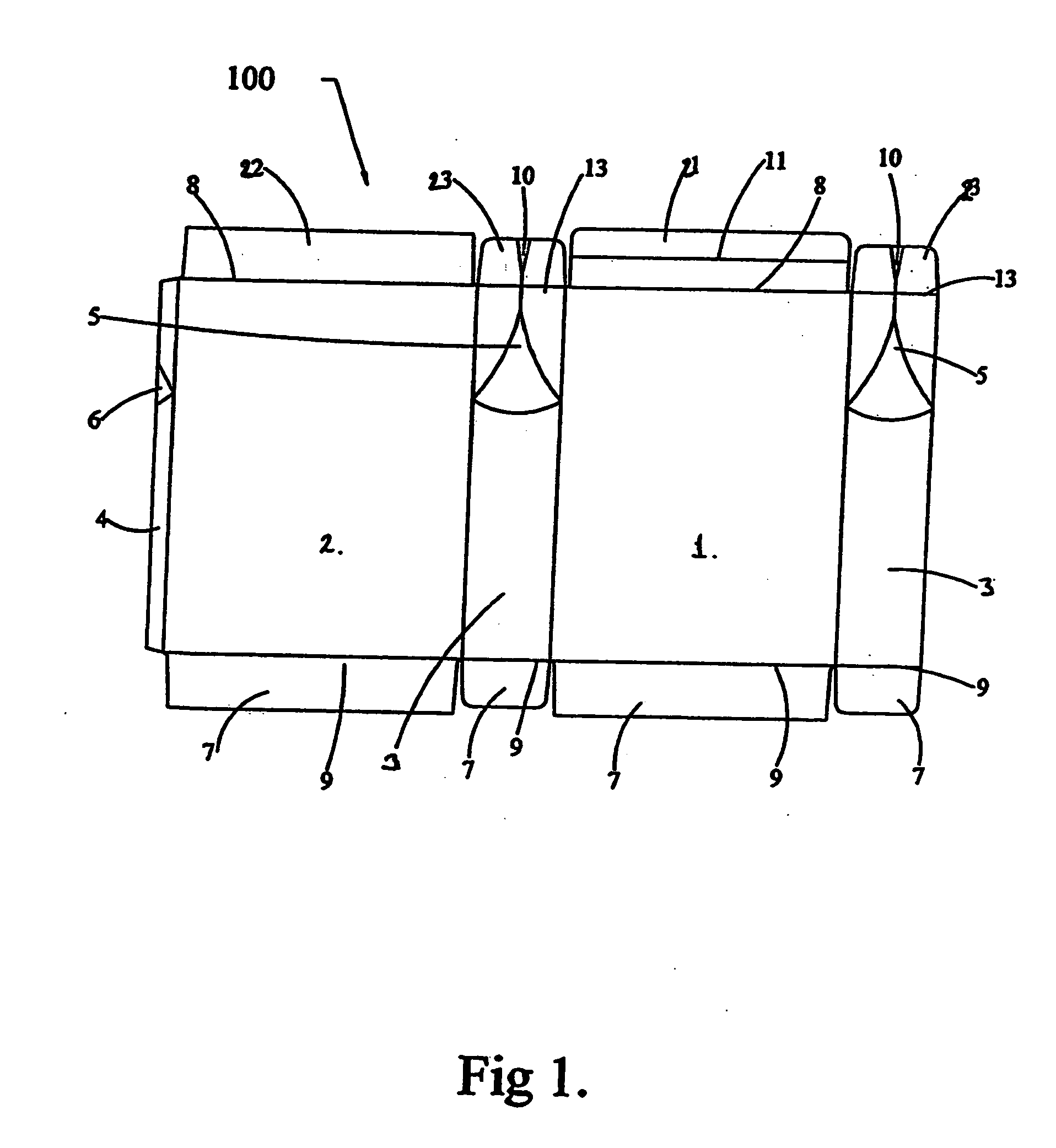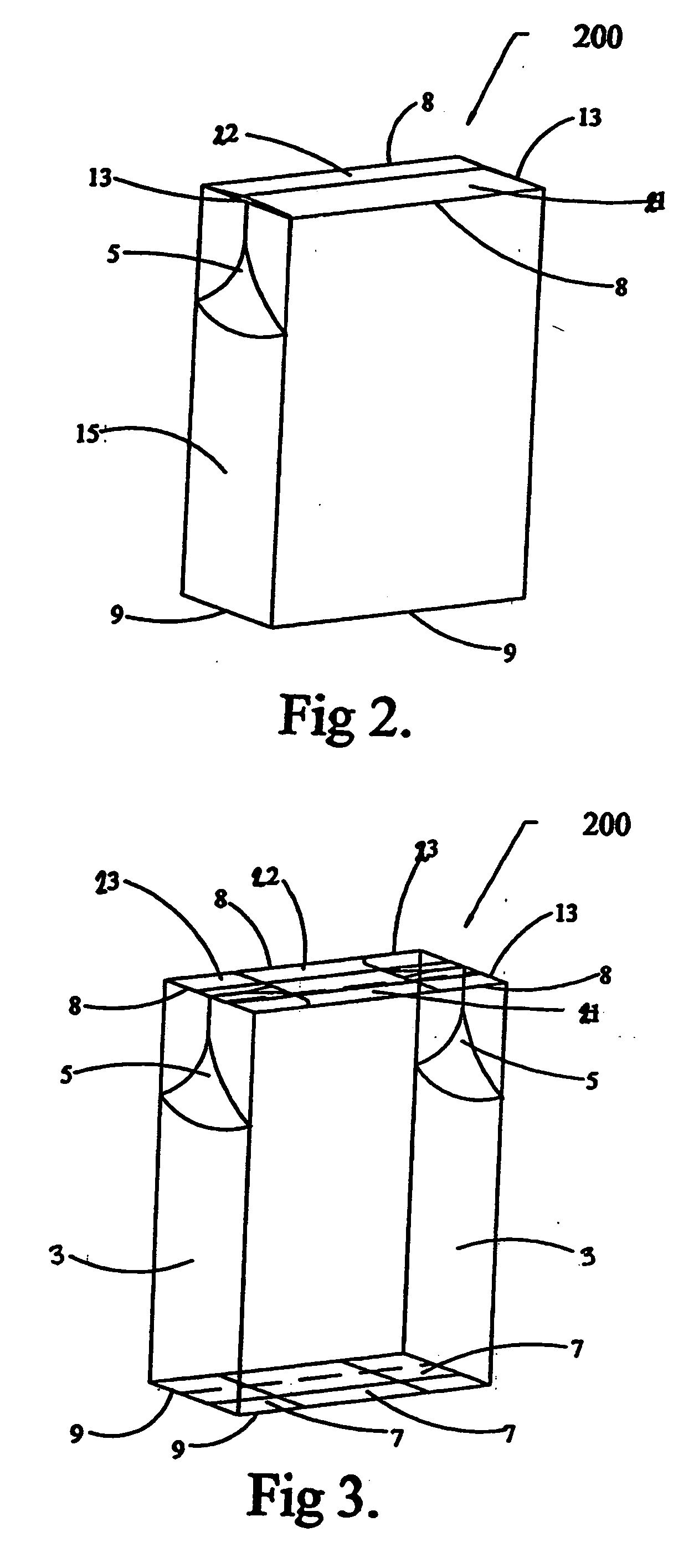Carton
a carton and lid technology, applied in the field of cartons, can solve the problems of affecting the quality of the product, the re-closing mechanism of the carton tends to not work particularly well, and the bag (which holds the cereal) is not securely held closed, so as to achieve the effect of little or no cos
- Summary
- Abstract
- Description
- Claims
- Application Information
AI Technical Summary
Benefits of technology
Problems solved by technology
Method used
Image
Examples
Embodiment Construction
[0064] Referring to FIG. 1, a blank 100 of the present invention is formed from a planar sheet of solid board cardboard (or acetate / plastic) and comprises four main panels, including a front panel 1, a rear panel 2 and two side panels 3. At the top portion of these panels are provided associated flaps 21, 22, 23 and 23 which form four engaging members of the reclosure device and the top of the carton.
[0065] The base of the carton is formed from four flaps 7. A glue seam 4 on the side facilitates formation of the carton 200 from the blank 100 as shown in FIG. 2.
[0066] Flaps 21, 22, 23 and 23 are shown in FIG. 1 in an unfolded position. In this regard, flap 21 has a crease 11 along its width to facilitate re-closure of the carton. The crease allows the flap 21 to be bent over and thereby be angled favourably for insertion into the carton as described more fully below.
[0067] Flaps 23 are creased with a score pattern 10 as shown in FIG. 1, to allow inward folding, following a crease ...
PUM
 Login to View More
Login to View More Abstract
Description
Claims
Application Information
 Login to View More
Login to View More - R&D
- Intellectual Property
- Life Sciences
- Materials
- Tech Scout
- Unparalleled Data Quality
- Higher Quality Content
- 60% Fewer Hallucinations
Browse by: Latest US Patents, China's latest patents, Technical Efficacy Thesaurus, Application Domain, Technology Topic, Popular Technical Reports.
© 2025 PatSnap. All rights reserved.Legal|Privacy policy|Modern Slavery Act Transparency Statement|Sitemap|About US| Contact US: help@patsnap.com



